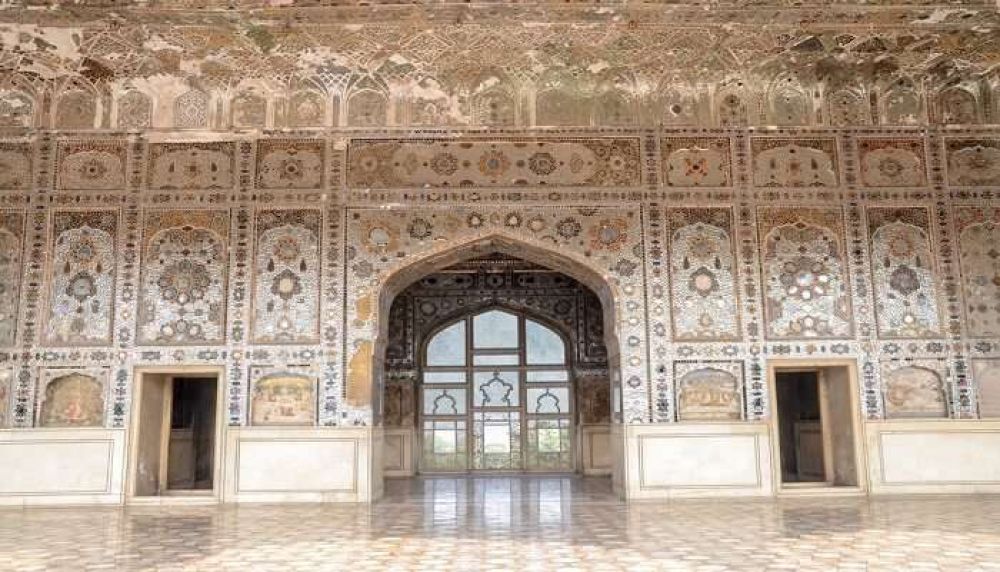

The Sheesh Mahal or the 'Palace of Mirrors' stands as a magnificent example of the grandiose architectural heritage of Patiala, Punjab, India. It was built in the 19th century under the reign of Maharaja Narinder Singh (1845-1862) who was known for his patronage of arts and culture. The palace has been a symbol of the opulence and aesthetic sensibilities of the royal family of Patiala. The lavishly decorated walls and ceilings adorned with beautiful mirror work and intricate frescoes attract visitors and historians alike, making it a pivotal destination for those interested in India's regal past and architectural beauty.
The tourism history of Sheesh Mahal is closely tied to the legacy of the Patiala state. After India's independence and the subsequent merging of princely states into the union, many royal residences slowly transitioned into tourist attractions. The Sheesh Mahal was no exception. Initially, the palace served to host dignitaries and was a part of the royal residence compound. In the latter half of the 20th century, efforts were made to conserve and showcase the rich heritage of Patiala, including the Sheesh Mahal, to the public.
One of the significant boosts to the palace's tourism potential came with the establishment of the National Institute of Sports in Patiala, which drew visitors from across the country. Interested scholars, domestic travelers, and eventually international tourists began to frequent the Sheesh Mahal, eager to take in its historical significance and artistic splendor.
The Sheesh Mahal is renowned for its awe-inspiring mirror work chambers, which are a testament to the artistic finesse of the period. Moreover, it houses an impressive collection of art and antiques, including a gallery that showcases rare medals from different parts of the world. The famed Lakshman Jhula - a replica of a similar structure in Rishikesh - is another attraction, suspended above a man-made lake within the palace grounds.
Adjacent to Sheesh Mahal is the 'Bagh Gulari', an intricately landscaped garden with fountains and terraces, echoing the Mughal style of landscaping, which offers a serene escape for visitors.
With the rise of cultural and heritage tourism, there has been an increase in the number of visitors to Patiala, seeking out historical experiences like the Sheesh Mahal. The Punjab state government has invested in the promotion and conservation of such sites to boost tourism. Additionally, interactive experiences such as cultural events, museum exhibitions, and light and sound shows have been integrated into the tourist experience at Sheesh Mahal.
Eco-friendly and sustainable tourism practices are being increasingly emphasized to ensure the preservation of such historical sites for future generations. Moreover, with the advancement in digital marketing, virtual tours and online information portals have become significant in shaping tourism trends and making heritage sites like Sheesh Mahal more accessible to a global audience.
Visitors to Sheesh Mahal can enjoy guided tours that provide insight into the history and architecture of the palace. It is advisable for visitors to plan their trip ahead and check for any scheduled cultural events that may enhance their experience. The palace is typically open to visitors year-round, but timings may vary, so verifying before arrival is recommended.
The inclusion of Sheesh Mahal into heritage walks and inclusion in cultural festivals has contributed greatly to the site's emerging prominence on the tourism map of Punjab, and indeed, of India.